From the early pioneers of circus parachuting at the begining of the 20th Century, to female Airborne service personnel in the present-day, women have often had a significant role in Airborne Forces.
The novel spectacle of parachuting displays was often increased in the early years of the 20th Century when women jumped from hot air balloons to the surprise of their audiences and launched the careers of several performers.
As the Second World War began however, the role of women in support of the Armed Services came to the fore. Drafted into numerous roles across the military, women played an important role among Airborne Forces.
Some worked with the men directly as nurses, drivers and served in administrative roles. Others, such as the much-loved Cicely Paget-Bowman, joined First Aid Nursing Yeomanry (FANY), and were warmly remembered for their work driving ambulance 'blood tubs' and tending wounded parachutists at training locations such as Ringway, Tatton Park and Salisbury Plain.
Women who joined the Womens Auxilliary Air Force (WAAF), in their work on ground duties at airfields across the UK, had an essential role in the efficient packing of parachutes for the RAF and Airborne Forces (as seen in some of the photos linked). Women on such duties were faced with constant reminders of the importance of the task. One parachutist recalled his balloon jumps:
…where one drops vertically for a hundred feet until the chute opens with a loud bang, and prayed the paratroops prayer on the way down. “God bless the WAAF who packed it [the parachute].”’
It was not uncommon, particularly prior to the arrival of reserve parachutists in the mid-1950s, for parachute packers to be escorted to a Drop Zone in the event of a parachute failure to demonstrate the fatal consequences of a poorly packed 'chute. It was huge responsibility, and one which was carried out with great care and pride.
Among many other roles, another prominent task carried out to help the war effort saw women help to construct gliders at airfields in the UK.
The involvement of women in Airborne Forces has also been a more subtle one. Wives, friends and families of Airborne soldiers have developed a strong role in the Airborne community. Daphne Du Maurier, the author, and wife of Gen Browning, may have helped choose the maroon and blue colours of Airborne Forces (possibly derived from Browning's race horse colours).
For those who lost loved ones, many women have found great comfort among others in the Airborne community. Whilst serving, 'Airborne women' have been able to offer each other mutual friendship and support during deployments. Following the end of Airborne service careers, women have played a key role in sustaining the social and administrative activities of many Airborne Veterans organisations.
The familiar Airborne scarf worn by many, as their partners meet at various gatherings, are an enduring sign of their mutual attachment to the Airborne community.
In more recent times, the introduction of women into 'front-line' military service has also seen women take up service careers in Airborne Forces units of the Army Air Corps and Royal Logistics Corps especially.
Record under construction - with thanks to Margaret Szczepek
See also:
Cicely Paget-Bowman - First Aid Nursing Yeomanry (FANY) nurse who worked on the 'blood tubs' at RAF Ringway. The Airborne Family- A look at the Airborne Family, and the experiences of the wives and families of Airborne soldiers.

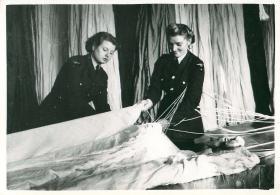
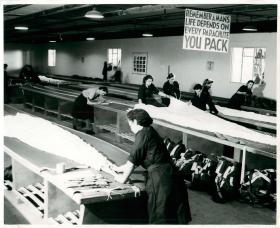
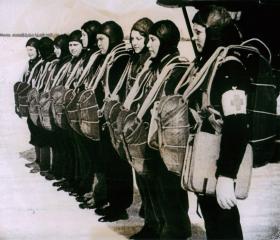
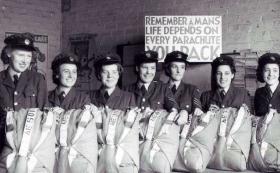
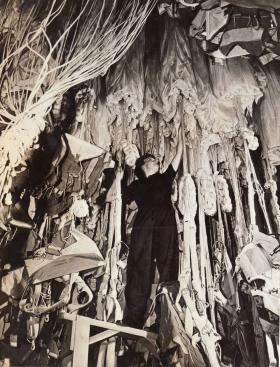
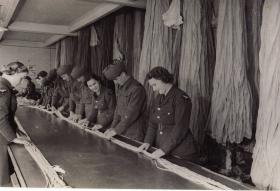
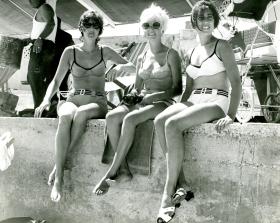
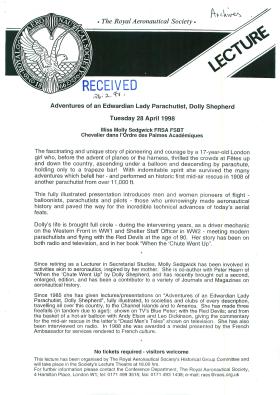
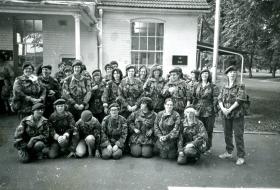
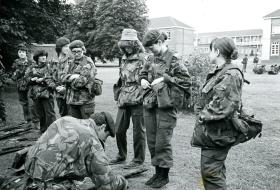

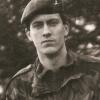
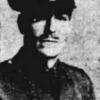

Latest Comments
Supposedly the woman in the photo I saw was one F.J. Parker and was part of an ATS detachment at the Hardwick Hall Airborne Depot
Add Comment
In order to add comments you must be registered with ParaData.
If you are currently a ParaData member please login.
If you are not currently a ParaData member but wish to get involved please register.